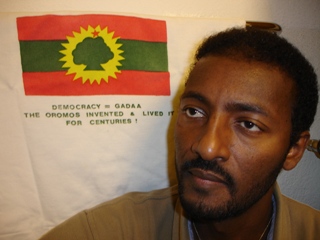Flood death toll in S.Ethiopia possibly exaggeratedWill Connors
Middle East Times
August 28, 2006
OMORATE, Ethiopia- Almost two weeks after the Omo River burst its banks and flooded the surrounding plains, many local observers continue to question the number of displaced and dead reported by government officials and media.
According to regional administrators 364 people perished when a "flash flood" produced by rains in the highlands caused the Omo to spill over its banks, catching the local Dasanech nomads by surprise.
This assessment, however, is not universally accepted here. Several locals interviewed said that the Dasanech know the river well, and had moved themselves and their livestock to higher ground before the water rose.
Many also question that any loss of life occurred at all. One foreigner with long-standing ties to the community said that in all his conversations with the Dasanech, whose language he speaks fluently, not one mentioned the death of a relative or a neighbor.
A doctor from a nearby district who had come to the South Omo region to assist in the recovery efforts supported this belief. He said that in the four days that he had spent living and working in rural villages, he had neither heard nor seen of any dead. "I treated several cases of diarrhea and one or two possible malaria cases," Dr. Getachew said. "But I heard of no dead. There actually isn't much for me to do here, so I'm going back to my own district."
Government officials stand by their earlier claims of reported deaths, but it remains unclear whether these numbers are too high - or even too low. Kadaike Gezahain, head administrator for the South Omo regional zone, highlighted the difficulties of working in such an area and thus the confusion that arises.
"In some places we registered the dead by name from members of the community, but we didn't collect any bodies and bury them," he said. "The people are saying that the dead bodies are floating in [nearby] Lake Rudolph." But because of the water levels and the inaccessibility by car and even boat, "the situation is very difficult."
The reported number could even be an underestimate, according to one local villager. "I know of one man who died from my village, but in a nearby village there live 1,500 people, and we suppose them all to be dead," a man named Yerbur said.
Nega Bamago, food monitor of the Awassa field office of the United Nations World Food Program (WFP), has been in Oromate for two weeks, and was the first aid agency representative to arrive in the area. He says that although he also doubted the initial death toll reports, the need in the South Omo is real.
"The local officials wouldn't even talk to me the first few days I was here because I didn't accept their assessment of number of deaths," Nega says. "But a number of people are surrounded by water, so I can't say [the numbers] have been exaggerated. Many of their grain stores were taken by the floods, and that is why food is needed."



0 Comments:
Post a Comment
<< Home